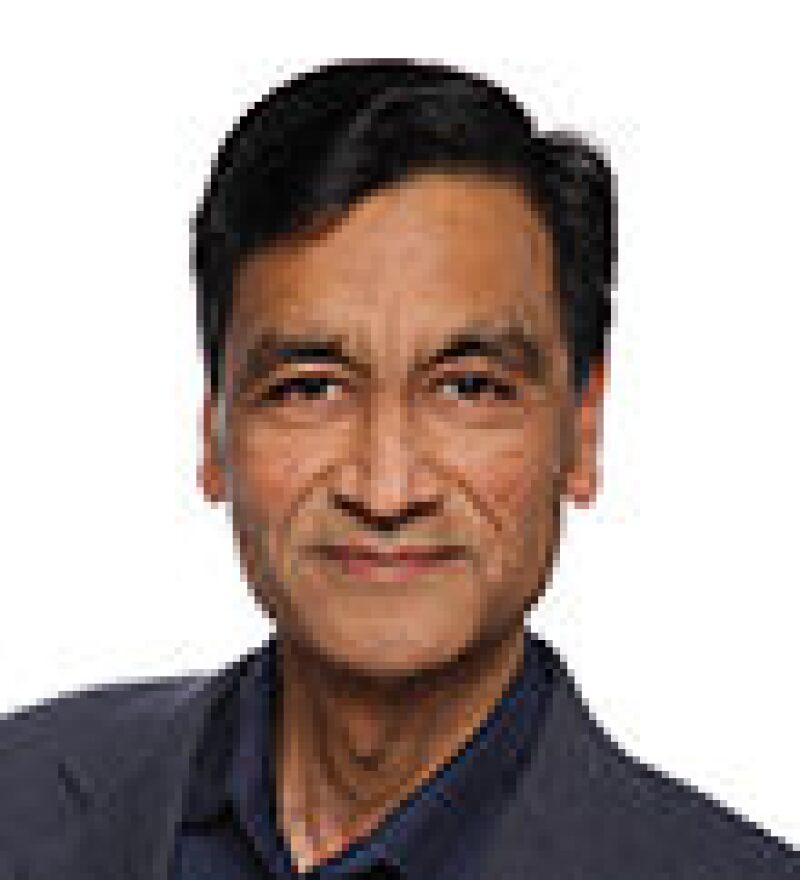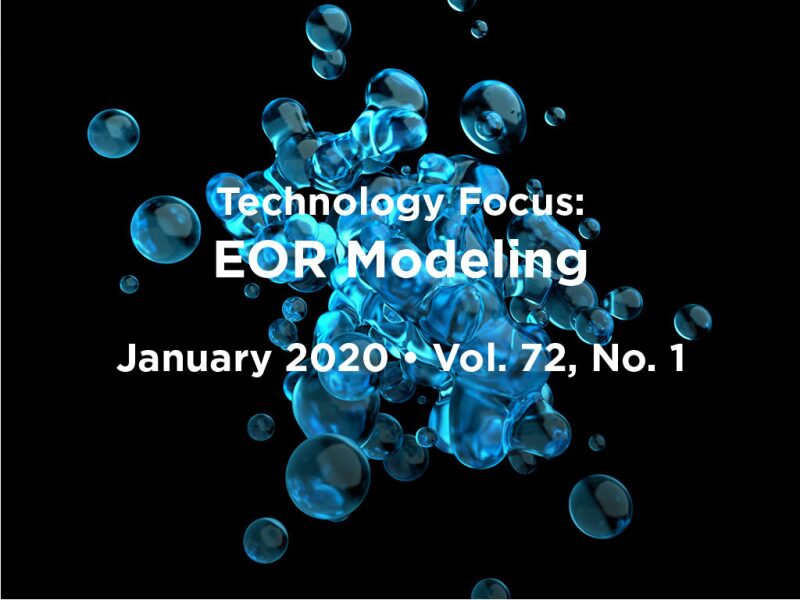The bulk of the literature on enhanced oil recovery (EOR) from the past year has been devoted to an improved understanding of trends started more than a decade ago with physical and numerical modeling. A quick review of the basics will be helpful for putting these developments in perspective. The concept of displacement in an EOR method requires bringing the mobility ratio of displacing fluid to that of displaced oil under unity [Kw⋅µo/Ko⋅µw<1; Ko, Kw being relative permeabilities of displaced oil and displacing fluid (e.g., water), respectively, and µo, µw being their respective viscosities], and increasing sweep efficiency (Es) of the displacement process. Various established EOR methods try to accomplish this in different ways, depending on the formation and oil types, aiming to keep costs and environmental impact down while obtaining high and quick recovery.
Thus, polymers or foams have been used traditionally to increase viscosity of displacing fluids (µw). To reduce Kw/Ko, surfactant; alkaline; microbes, which create in-situ surfactants; or low-salinity water, which changes wettability to water, were used. Steam or hot water have also been used to reduce both Kw and µo. Miscible gas or solvent displacements were used to attack µo. Quite frequently, a combination of these mechanisms has been applied, alkaline/surfactant/polymer being a good example. Similarly, to address improvement in sweep, blocking agents such as polymers, microgels, or microbes, or a combination of a couple of these mechanisms, have been applied.
While the underlying mechanisms remain the same, major developments in EOR in recent years center on the use of engineered water or nanoparticles to reduce Kw, on the experimental development of chemicals that are less susceptible to high-temperature and high-salinity environments, or on the use of novel computational techniques and machine learning to design and monitor the flood operations better. The literature of the last year is an important reflection of that evolution, as the selected papers reflect.
This Month's Technical Papers
Study Investigates Smart Waterflooding in Sandstone Reservoirs
Capacitance-Resistance Model Used for Integrated Detection of Water Production
Heavy-Oil Steamflood Validates Machine-Learning-Assisted Model
Recommended Additional Reading
SPE 195553 Investigation of Pore-Scale Mechanisms of Microbial Enhanced Oil Recovery Using Microfluidics by Calvin Gaol, Clausthal University of Technology, et al.
SPE 192110 Polymers and Their Limits in Temperature, Salinity, and Hardness: Theory and Practice by Eric Delamaide, IFP Technologies Canada, et al.
SPE 192651 Performance Evaluation and Field Trial of Self-Adaptive Microgel Flooding Technology by Zhe Sun, China National Offshore Oil Corporation, et al.

| Subodh Gupta, SPE, is chief of research and development at Cenovus Energy, where he looks after enhancing collaborative research to bring new science and technologies from other areas and industries to improve the sustainability of oil sands production. Previously, among other projects, he led the development of solvent-aided process—solvent-based recovery methods—in oil sands, researched ways to model new reservoir processes, and proposed alternate methods of carbon sequestration. Gupta has worked in the petroleum and process industries as an engineer for more than 25 years. He has been an SPE Distinguished Lecturer as well as a member of the Distinguished Lecturer Selection Committee. Gupta has been an invited speaker and panelist to many conferences, including the Canadian International Petroleum Conference, the Canadian Institute’s Carbon Capture and Storage Conference, the Global Petroleum Conference, and those of the Canadian Heavy Oil Association and the American Association of Petroleum Geologists. He holds a bachelor’s degree in chemical engineering from the Indian Institute of Technology, Delhi, and MS and PhD degrees from the University of Calgary. |


